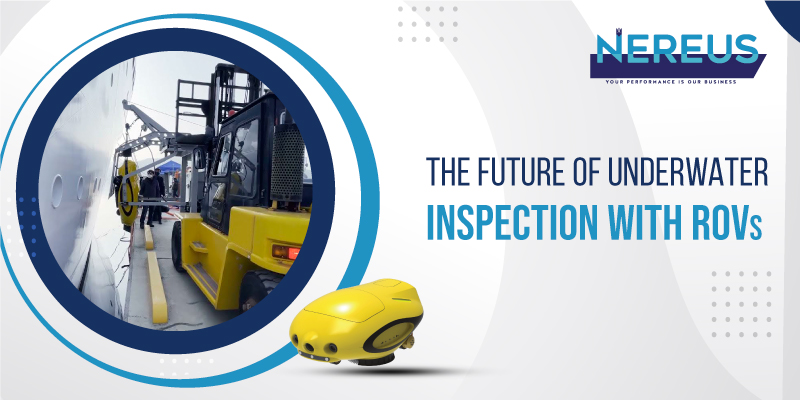From underwater cleaning challenges to their impact on the marine industry, ROVs are at the forefront of revolutionizing the way we explore and maintain the world beneath the waves. In this comprehensive exploration, we delve into the future of underwater inspection, focusing specifically on the transformative potential of ROVs in underwater operations.
ROVs have come a long way since their inception. Originally developed for deep-sea exploration, today modern ROVs are equipped with high-definition cameras, advanced sensors, robotic arms, and even artificial intelligence, enabling them to perform tasks that were once unimaginable.
Get high-quality underwater services in UAE from Nereus Subsea.
Underwater Cleaning Challenges: ROVs as Precision Instruments
1. Addressing Biofouling:
Biofouling, the accumulation of marine organisms on submerged surfaces, poses significant challenges to ships, offshore structures, and underwater equipment. ROVs equipped with specialized cleaning tools and brushes can efficiently remove biofouling, ensuring optimal hydrodynamics and fuel efficiency for vessels.
2.Precision Debris Removal:
Underwater structures often accumulate debris, affecting their functionality and safety. ROVs, with their dexterity and precision, can meticulously remove debris from delicate equipment, pipelines, and sensitive marine habitats without causing damage, ensuring operational efficiency and environmental preservation.
Contact Nereus Subsea , the best marine company in UAE for the best ship repair services.
ROVs in the Marine Industry: Enhancing Efficiency and Sustainability
1.Efficient Inspections:
Traditional underwater inspections were time-consuming and often risky for human divers. ROVs have revolutionized this process by offering real-time, high-resolution video feeds and sensor data. These inspections are not only faster but also more accurate, ensuring that potential issues are identified promptly, preventing costly damage and downtime.
2.Environmental Efficiency:
The debris collection feature of ROVs is not just about cleaning; it’s about environmental responsibility. By efficiently collecting debris, these ROVs contribute to preserving marine ecosystems, aligning underwater maintenance with sustainability goals.
Advancements and Potential Applications of ROVs
1.Autonomous ROVs:
The future of underwater inspection lies in autonomous ROVs. These intelligent machines, guided by AI algorithms and machine learning, can perform complex tasks independently. They can inspect vast areas, identify anomalies, and execute necessary actions, minimizing human intervention and maximizing efficiency.
2.Integration of Advanced Sensors:
ROVs are becoming sensor hubs, incorporating technologies like sonars, magnetometers, and environmental sensors. These sensors provide comprehensive data, enabling in-depth analysis of underwater structures and efficient underwater infrastructure management.
3. AI and Machine Learning:
AI-powered ROVs can process vast amounts of data collected during inspections. Machine learning algorithms enable these robots to recognize patterns, identify anomalies, and even predict potential issues. This predictive capability revolutionizes maintenance strategies, allowing proactive measures to be taken before problems escalate.
Unlocking the Advantages: ROVs’ Influence on the Marine Industry
The future of underwater inspections is undoubtedly intertwined with the evolution of ROVs and other cutting-edge technologies. As these robotic systems become smarter, more autonomous, and equipped with advanced sensors, they will redefine the capabilities of underwater services.
ROVs have become the workhorses of underwater inspection. They can reach depths that are perilous for humans, enabling inspections in extreme environments such as deep ocean trenches and offshore drilling sites. Equipped with high-definition cameras and advanced sensors, ROVs provide detailed visual data in real-time, allowing experts on the surface to make informed decisions swiftly.
Nereus Subsea’s ROVs, manned by skilled ROV pilots, offer unparalleled precision in hull inspection and cleaning. The technology minimizes diver intervention, ensuring meticulous examination of the vessel’s hull without the risks associated with traditional underwater inspections.

